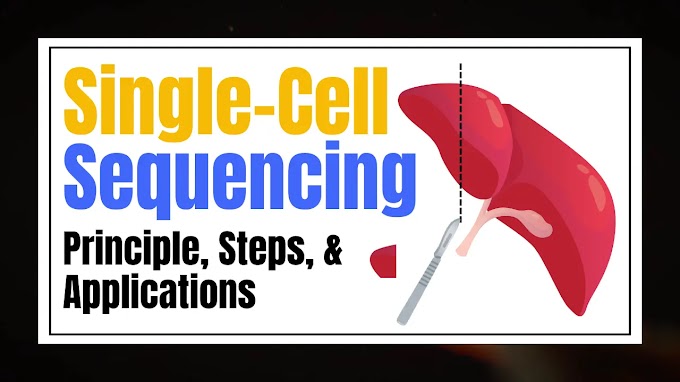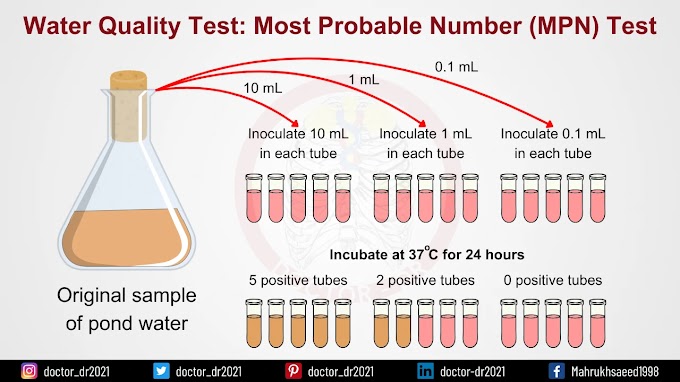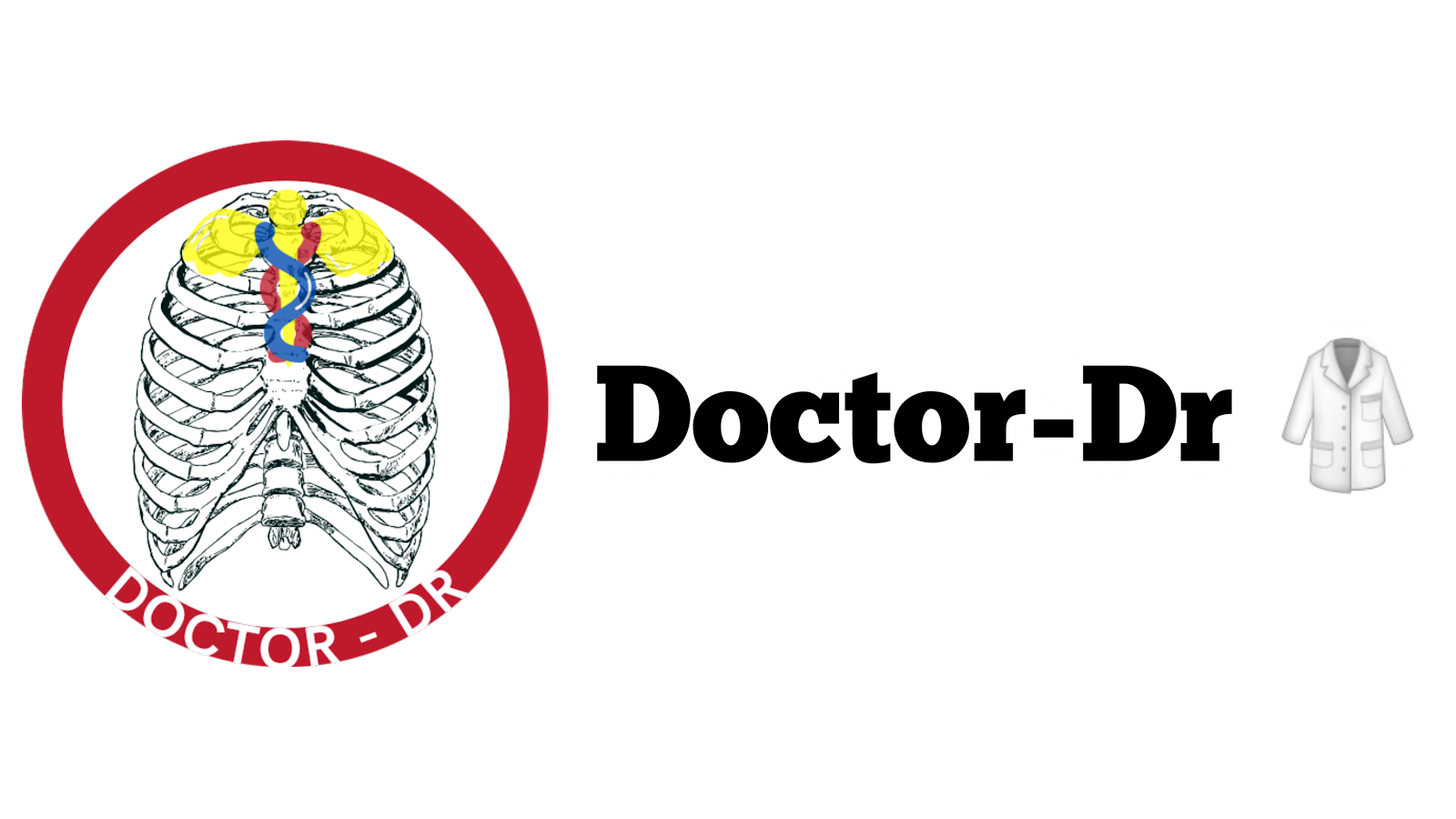Table of Contents
- Introduction to Single-Cell Sequencing
- Principle of Single-Cell Sequencing
- Process of Single-Cell Sequencing
- Advantages of Single-Cell Sequencing
- Limitations of Single-Cell Sequencing
- Applications of Single-Cell Sequencing
- Developments in Single-Cell Sequencing
- Single-Cell Sequencing vs. Bulk Sequencing
- References
Introduction to Single-Cell Sequencing
- Single-cell sequencing is a method that sequences a single cell at a time to study its genome, transcriptome, epigenome, or other molecular characteristics.
- It is useful for studying the unique characteristics of cells and understanding how they develop or contribute to diseases.
- This technique helps us study the differences between different cells and how they are related to each other.
- Traditional sequencing, also called bulk sequencing, looks at the DNA or RNA of a group of cells and gives an average representation of many cells.
- Bulk sequencing is useful for studying general patterns in large groups of cells.
- However, it does not provide information about the unique differences between individual cells.
- This limitation makes bulk sequencing less suitable for studying complex systems with many different types of cells or for finding rare cell types and small differences between cells.
- Single-cell sequencing is a newer technology that solves this problem.
- It was named as the Method of the Year for 2013 by Nature.
- Unlike traditional sequencing methods, single-cell sequencing looks at one cell at a time, which allows the study of the unique genetic makeup of each cell.
- This enables detailed study of biological processes that is not possible with bulk sequencing methods.
Principle of Single-Cell Sequencing
- The principle of single-cell sequencing involves studying individual cells to understand their unique molecular characteristics and study cell diversity.
- It works by isolating single cells from a group and analyzing their genetic material.
- The process of single-cell sequencing begins by isolating individual cells.
- Each isolated cell is tagged with a unique nucleotide sequence or cellular barcode which helps to trace back the sequencing data to its original cell.
- These barcodes also allow simultaneous sequencing of multiple cells in a single run.
- Short adapters are also added to the template to prepare it for sequencing.
- The resulting library of fragments is ready for sequencing using next-generation sequencing methods.
Process of Single-Cell Sequencing
Isolation of Single Cells
- The first step is isolating individual cells from a group of cells.
- Different isolation methods are used for different types of cells.
- It is easier to isolate abundant cells compared to rare cells.
- For abundant cells, simple methods like serial dilution, mouth pipetting, micromanipulation, and microfluidic platforms can be used.
- Rare cells like circulating tumor cells (CTCs) are harder to isolate because they are present in small numbers.
- Methods like MagSweeper and nanofilters use electric fields and size filtering to capture rare cells.
- Some of the other commonly used isolation methods are:
- Fluorescence-Activated Cell Sorting (FACS): In this method, cells are labeled with fluorescent markers that attach to specific proteins. A flow cytometer separates cells based on their fluorescence. This method is effective in isolating specific cell populations but it requires a large number of starting cells and can damage cell viability during sorting.
- Magnetic-Activated Cell Sorting (MACS): This technique uses magnetic particles to tag specific cell surface proteins. The tagged cells are isolated using an external magnetic field. This is fast and scalable but can cause damage to cells and has low purity when isolating cells from complex populations.
- Laser Capture Microdissection (LCM): This method uses a laser to isolate cells directly from tissue samples on a microscope slide. It is especially useful for capturing cells from intact tissue samples but requires visual inspection to identify the target cells. This process can sometimes cause damage to the cells during isolation.
- Manual Cell Picking or Micromanipulation: In this method, microscope and micropipettes are used to manually pick and isolate cells. This method is precise but it is time-consuming and has low throughput.
Extraction and Amplification of Genetic Material
- After isolating individual cells, they are lysed to release their genetic material.
- The DNA is amplified to ensure sufficient material for sequencing.
Library Preparation
- The amplified genetic material is prepared into a sequencing library which contains single-stranded DNA fragments that are derived from a single cell.
- Library preparation includes barcoding each isolated cell and adding adapter sequences.
- The barcodes help to identify the original source of the data after sequencing.
- The adapters help bind the templates to the sequencing device.
Sequencing
- After library preparation, sequencing can be done using next-generation sequencing (NGS) platforms.
- The most commonly used method is Illumina, which uses the sequencing-by-synthesis method.
- This method involves adding fluorescently labeled nucleotides into the growing DNA strand.
- Each nucleotide emits a specific fluorescent signal to identify the added base.
- Proton-based sequencing can also be used for single-cell sequencing.
- Instead of fluorescent labels, this method detects the release of protons during nucleotide incorporation.
- The proton-based sequencing method is faster than the fluorescence-based method but it is less accurate.
- Other NGS methods like Oxford Nanopore and PacBio sequencing can also be used for single-cell sequencing.
Data Analysis
The data analysis of single-cell sequencing is divided into 3 phases: primary, secondary, and tertiary analysis.
Primary Analysis:
- The raw output of sequencing is initially in binary base call (BCL) files.
- Primary analysis converts the raw BCL files into FASTQ files for compatibility with downstream tools.
- These files contain sequence information.
- During this phase, barcode tags in the data are used to separate sequences from different cells or libraries, which helps in accurate cell identification.
Secondary Analysis:
- In this phase, the sequences in the FASTQ files are aligned to a reference genome or transcriptome.
- This step helps in variant detection, transcript quantification, and gene expression profiling.
- Quality control is also done to check the integrity of the data by filtering poor-quality data and removing non-cellular barcodes.
Tertiary Analysis:
- In this phase, data visualization and biological interpretation are done to extract biological information.
- The information is simplified and visualized to identify patterns and unique characteristics.
- It also involves analyzing the differences in gene expression between cells, studying biological pathways, and creating clear visuals to understand the results.
Advantages of Single-Cell Sequencing
- Single-cell sequencing helps to study genetic material at the single-cell level, providing a more detailed understanding of cellular differences.
- It can detect rare cell types that are missed in bulk sequencing, which is useful in fields like cancer research and immunology.
- It provides detailed information about individual cells within a specific tissue.
- It can be used to study complex biological systems by analyzing the composition and cellular diversity of all cells in a tissue sample.
- It helps us to better understand different cell types and complex tissues.
Limitations of Single-Cell Sequencing
- Single-cell sequencing is expensive, which limits its applications for large-scale studies.
- The isolation process can stress cells, causing changes in their characteristics and viability.
- Single-cell sequencing data has more noise compared to bulk sequencing, which reduces reliability in some applications.
- Single-cell sequencing often doesn’t detect all genes in each cell, so a lot of data is missing or has zero values.
- Some genes may be present in a cell but not captured by sequencing, leading to sparsity in the data, which can make analysis difficult.
- The data can be unreliable as it is collected from just one cell, making it hard to distinguish between accurate measurements and technical errors.
- The amplification step can introduce errors and biases, making it difficult to detect genetic variations in individual cells accurately.
Applications of Single-Cell Sequencing
- Single-cell sequencing can be used in biomedical research in various fields, including developmental biology, neurobiology, diabetes research, and cancer studies.
- Cancer Research: It helps identify genetic variations within tumor cells, aiding in the understanding of cancer cells and their mechanisms. It is also useful for developing targeted treatments.
- Immunology: It is used to study different immune cells and their roles in various diseases.
- Developmental Biology: Single-cell sequencing helps study cellular differentiation and changes occurring during processes like embryogenesis.
- Microbiology: It is useful in studying microorganisms by detecting microbial species, their genetic structure, and their roles in processes like antibiotic resistance.
- Clinical Diagnostics: Single-cell sequencing is valuable for understanding disease mechanisms, identifying rare or novel cell types, and developing therapeutic methods for different diseases.
Developments in Single-Cell Sequencing
- Single-cell Combinatorial Marker Sequencing (SCI-seq): This method creates many single-cell libraries at once, helping detect changes in cell copy numbers, which makes it easier and cheaper to study cell differences within tissues.
- Single-cell Chromatin Overall Omic-scale Landscape Sequencing (scCOOL-seq): It can measure different features of a single cell, such as DNA changes, chromatin states, and DNA methylation patterns, helping to understand gene regulation and cellular behavior.
- Topographic Single-cell Sequencing (TSCS): This method provides information about the spatial location of cells, which is especially useful for cancer research as it helps track the movement and spread of tumor cells.
- Microwell-seq: A cost-effective single-cell RNA sequencing method that uses microwell arrays to capture individual cells, improving detection and reducing costs compared to older droplet-based methods.
- Split-pool Ligation-based Transcriptome Sequencing (SPLiT-seq): Another cost-effective single-cell RNA sequencing method that uses barcoding to label individual cells.
- CRISPR-based Single-Cell Sequencing: Newer methods combine single-cell sequencing with techniques like CRISPR. For example, CRISPR Droplet Sequencing (CROP-seq) combines CRISPR screening with single-cell RNA sequencing.
Single-Cell Sequencing vs. Bulk Sequencing
Method:
- Single-cell sequencing: Studies one cell at a time, providing detailed information about individual cells.
- Bulk sequencing: Looks at all cells together, producing average data of a population of cells.
Cell Differences:
- Single-cell sequencing: Can detect cellular differences and identify rare cell types.
- Bulk sequencing: Represents the overall average of all cells, unable to detect individual cell differences.
Data Complexity:
- Single-cell sequencing: Generates large and complex datasets.
- Bulk sequencing: Produces simpler and summarized datasets.
Cost:
- Single-cell sequencing: More expensive due to advanced technology and data analysis requirements.
- Bulk sequencing: Less expensive for studying large cell populations.
Data Output:
- Single-cell sequencing: Gives a detailed view of individual cells, including unique gene expression or mutations.
- Bulk sequencing: Provides a generalized profile of the entire cell population.
Applications:
- Single-cell sequencing: Used in fields like developmental biology, cancer research, and immune response studies.
- Bulk sequencing: Suitable for large-scale genomic studies and broader studies where cellular-level detail is not needed.
Limitations:
- Single-cell sequencing: Technically demanding and more expensive.
- Bulk sequencing: Offers a generalized view, not revealing differences between cells.
References
Hu, P., Zhang, W., Xin, H., & Deng, G. (2016). Single-cell isolation and analysis. Frontiers in Cell and Developmental Biology, 4. https://doi.org/10.3389/fcell.2016.00116
Hwang, B., Lee, J. H., & Bang, D. (2018). Single-cell RNA sequencing technologies and bioinformatics pipelines. Experimental & Molecular Medicine, 50(8), 1–14. https://doi.org/10.1038/s12276-018-0071-8
Jovic, D., Liang, X., Zeng, H., Lin, L., Xu, F., & Luo, Y. (2022). An overview of single-cell RNA sequencing technologies and applications. Clinical and Translational Medicine, 12(3). https://doi.org/10.1002/ctm2.694
Lähnemann, D., Köster, J., Szczurek, E. et al. (2020). Eleven major challenges in single-cell data science. Genome Biology, 21, 31. https://doi.org/10.1186/s13059-020-1926-6
Lansdowne, L. E. (2022, April 5). Single-cell analysis – Advantages, challenges, and applications. Retrieved from https://www.technologynetworks.com/drug-discovery/blog/single-cell-analysis-advantages-challenges-and-applications-322768
Method of the Year 2013. (2013). Nature Methods, 11(1), 1. https://doi.org/10.1038/nmeth.2801
Mission Bio. (2022, February 24). Single Cell Sequencing vs Bulk Sequencing | Mission Bio. Retrieved from https://missionbio.com/capabilities/why-single-cell/
Nawy, T. (2013). Single-cell sequencing. Nature Methods, 11(1), 18. https://doi.org/10.1038/nmeth.2771
Sreenivasan, V. K. A., Balachandran, S., & Spielmann, M. (2022). The role of single-cell genomics in human genetics. Journal of Medical Genetics, 59(9), 827–839. https://doi.org/10.1136/jmedgenet-2022-108588
Tang, X., Huang, Y., Lei, J., Luo, H., & Zhu, X. (2019). Single-cell sequencing: New developments and medical applications. Cell & Bioscience, 9(1). https://doi.org/10.1186/s13578-019-0314-y
Vaga, S. (2024, February 26). Understanding Single-Cell Sequencing, how it works, and its applications. Technology Networks. Retrieved from https://www.technologynetworks.com/genomics/articles/understanding-single-cell-sequencing-how-it-works-and-its-applications-357578
Wang, Y., & Navin, N. E. (2015). Advances and applications of single-cell sequencing technologies. Molecular Cell, 58(4), 598–609. https://doi.org/10.1016/j.molcel.2015.05.005








.webp)
